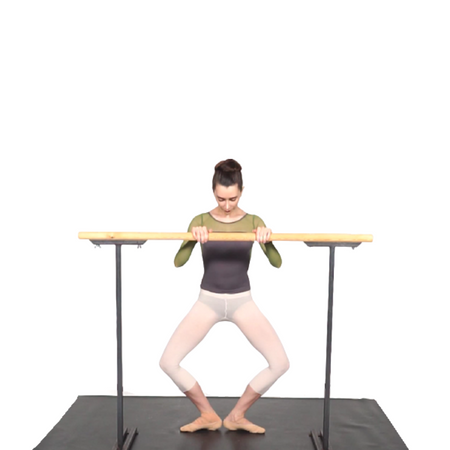Perfecting the Plié – How to do a Plié
One of the most fundamental movements in ballet technique is the plié. But how do you actually do a plié?
The plié involves bending the knees over the toes while keeping the heels pushing into the ground.
It is typically one of the first exercises in ballet class. A ballerina or ballet dancer will execute thousands of pliés through their life and even hundreds in just one ballet class. Although the plié may appear to be a ‘simple bending of the knees’, the plié is in-fact an extremely hard fundamental exercise to do correctly. The reason a ballerina will work so tirelessly on perfecting their plié is because having a strong and supple plié is the base of each turn, jump and nearly every transitions in a movement in ballet.
Learning how to properly execute a plié is essential for any ballet dancer, as it is a foundation for many other movements and due to the high amount of times a dancer does a plié in ballet class, dancers must ensure they are performing each plié correctly in order to prevent muscle imbalances or injury.
There are several types of pliés, including the demi-plié and the grand plié. The demi-plié is a small bend of the knees, while the grand plié is a deeper bend that brings the dancer closer to the ground. Both types of pliés can be performed in both first and second positions.
To begin, start in a standing position with your feet in first position, with your heels touching and toes turned out. Slowly bend your knees, making sure to keep your heels on the ground and your back straight. As you bend your knees, your thighs should come close to parallel with the ground. This is a demi-plié. To perform a grand plié, you will need to bend your knees even deeper (your heels can now lift off the ground) until your thighs are almost touching the ground.
It is important to note that the feet should stay in the same position throughout the plié, and the knee bend over the toes. Thinking of your knees bending over your middle toe on each foot will ensure proper alignment. Your weight should also be distributed evenly across both feet and not leaning into one leg.
A common mistake made by beginners is to let their knees collapse inward. This can cause strain on the knee and ankle joints and should be avoided as it can lead to injury. To prevent this, it is important to engage and strengthen the correct muscles including the inner thighs (also known as the adductors), quadriceps glutes and hamstrings. Strengthening these muscles will ensure a dancer develops proper alignment in their plié with the kneecaps facing forward.
Performing pliés can also help to improve your balance and stability. As you bend your knees and lower your centre of gravity, you will need to engage your core muscles to maintain your balance. This can help to strengthen your core and improve your overall balance and stability. This is very important to think about not just when we do pliés at the centre but from the first plié at the barre as well.
Pliés are also a great exercise for building strength and flexibility in the legs. The movement of bending and straightening the knees works the quadriceps and hamstrings, while the turnout of the feet works the inner thigh muscles. Regular practice of pliés can help to improve the strength and flexibility of these muscles, which is essential for all dancers.
In addition to its physical benefits, pliés also help to develop proper alignment and balance. The alignment of the legs, hips, and spine should be maintained as you bend and straighten your knees. This will help to improve your overall posture and balance.
In conclusion, pliés are an essential movement in ballet that can help to improve strength, flexibility, alignment, and balance. By practicing proper technique and engaging the correct muscles, dancers can master the plié and use it as a foundation for many other movements and techniques. Remember to keep your heels on the ground, your back straight, and your weight distributed evenly across both feet. In doing so not only will your plié drastically improve but all other areas of your ballet technique, strength and flexibility also.







